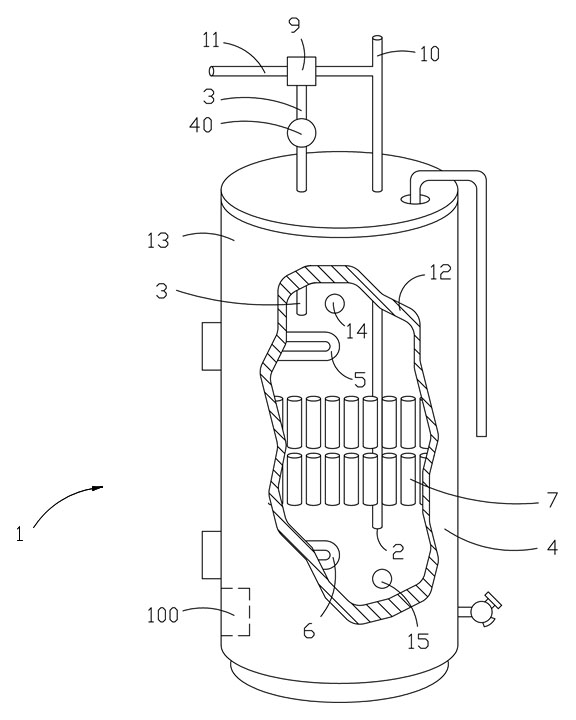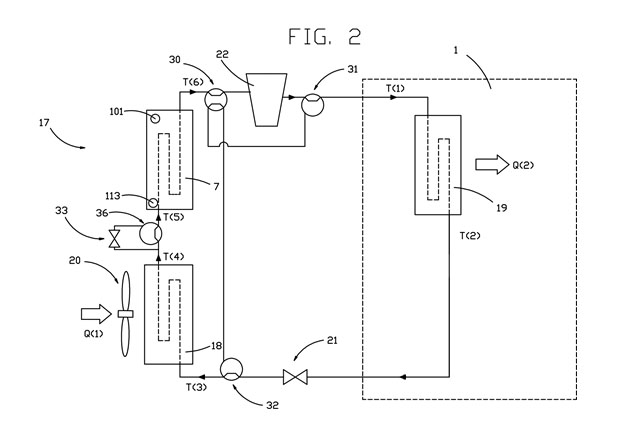
Renewable power does not make consistent power. In particular, solar PV makes peak power during the day, but peak usage often occurs at other times. This idea stores electrical power as heat energy for later use to heat a water heater, which can significantly help in balancing the power grid. Several embodiments are disclosed for this purpose.
Disclosed here are new methods for using TES in grid connected water heaters. The TES generally comprises phase change materials (PCM) that greatly increase the amount of heat that can be stored per water heater. Water heaters represent a significant opportunity as load and storage devices for power grids. Renewable power can be greatly increased with the adoption of smart water heaters that can store enough heat energy to last throughout a significant part of the day and night.
Currently, our homes have water heaters that are either heated by burning fossil fuels, or are electric resistance types whose electricity is powered by fossil fuels. Electric resistance water heaters are particularly inefficient in terms of CO2 emissions, heat to the environment, and cost. By contrast, heat pumps move heat energy. A heat pump water heater use half, or less, than the energy of an electrical resistance type. A heat pump water heater can even be more efficient that one that burns fossil fuels, as the majority of heat that goes into the tank comes from the immediate environment. So, the net heat expelled to the environment is significantly smaller than other types. Net heat is generally ignored as a factor in climate change, but it should not be ignored. Heat pump water heater are currently more expensive, but this is partially due to low manufacturing numbers. By comparison, an inexpensive refrigerator can be had for under $500, which similarly contains a heat pump. Heat pump water heaters currently have a payback period of a few years. After this, they save money to consumers.
Utilities would like to sell grid interactive electric resistance water heaters, as they maximize electricity use. But this does not significantly reduce water heaters effect on anthropomorphic climate change, and should be avoided. What we all need is water heaters that reduce consumption, and help balance the grid to enable greater use of renewable sources of power. What we also need are incentives for the public to replace all water heaters with the design disclosed here. Utilities could then increase electricity use by replacing fossil fuel water heaters, as well as resistance water heaters, with this design.
The figures below represent only the simplest embodiments. Many more embodiments and details are given in the links below. The first figure below represents a water heater, with the addition of an added TES device (3). The TES further comprises phase change material (PCM) which increases the heat storage capacity of the tank. This embodiment may be a grid interactive water heater (GIWH) where a control system interacts with the power grid. The GIWH can take advantage of less expensive power, as well as consume excess power at times when the grid needs excess power generation to be consumed.

The following drawing illustrates a water heater element comprising a heat pump cycle and a TES that is external to the water tank. This gives the advantage of not having to have a phase change material (PCM) that melts within the temperature range of the water in the tank. Further, the PCM can't come in direct contact with the water in the tank, in the event of a leak. The design also comprises a cascaded heat pump cycle, which can improve the operating COP.

US Utility Patent US 12050035 B2 has been granted - as of July 30, 2024. The patent claims a combination of phase change material and control. However, for public good I have purposely not pursued claims, or divisional applications for other embodiments. Also, no there are no foreign patents.
Another way of using water heaters is to overheat a tank, and then use a mixing valve to cool the temperature of outgoing water. This method results in a water heater that stores less, but is still an improvement. The control methods in this patent can be applied to these devices without infringment on this patent's claims. I hope to see many smarter water heater come to market soon.
This disclosure represents a new direction in utilizing TES in grid connected water heaters. This patent application outlines ways of balancing the power grid and reducing the energy usage. The following links open PDF files for the US Utility Patent Application:
GRID INTERACTIVE WATER HEATER Specification - RPA
Drawings:
GRID INTERACTIVE WATER HEATER Drawing 1
GRID INTERACTIVE WATER HEATER Drawing 2
GRID INTERACTIVE WATER HEATER Drawing 3
GRID INTERACTIVE WATER HEATER Drawing 4
GRID INTERACTIVE WATER HEATER Drawing 5
Prior Art
Prior art references generally have disclosed using grid interactive water heaters to store heat energy for later use. However, these water heaters lack sufficient storage capacity. Further, they do not supply the grid with enough information for optimal grid balancing. The present application includes embodiments and methods that overcome these deficiencies.
Future Development
Many suggestions are contained within the present patent disclosure, and there may be many obvious alternative embodiments.